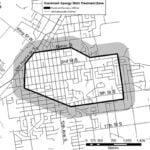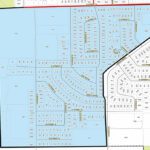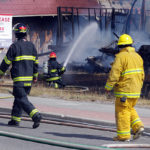Home »

Province acting to save endangered caribou
The Ministry of Forests, Lands and Natural Resource Operations is taking immediate action to save caribou herds under threat from wolf predation in two separate and targeted actions: one in the South Selkirk Mountains and the other in the South Peace.
The South Selkirk herd is at high risk of local extinction. The population has declined from 46 caribou in 2009 to 27 in 2012, and to 18 as of March 2014. Evidence points to wolves being the leading cause of mortality.
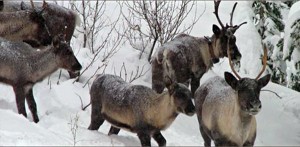 The South Selkirk is a trans-boundary herd, and caribou move freely between B.C., Washington and Idaho. Officials from B.C., Washington and Idaho States, First Nations, the U.S. Forest Service and the U.S. Fish and Wildlife Service have been working together on a research project and have collared six of the remaining 18 caribou to help investigate the cause of decline. Wolves have killed two of the remaining caribou (11% of the herd) in the past 10 months.
The South Selkirk is a trans-boundary herd, and caribou move freely between B.C., Washington and Idaho. Officials from B.C., Washington and Idaho States, First Nations, the U.S. Forest Service and the U.S. Fish and Wildlife Service have been working together on a research project and have collared six of the remaining 18 caribou to help investigate the cause of decline. Wolves have killed two of the remaining caribou (11% of the herd) in the past 10 months.
Ministry staff will aim to remove up to 24 wolves by shooting them from a helicopter before snow melt, explained a Ministry of Forests, Lands and Natural Resource Operations press release issued Jan. 15.
In four caribou herds in the South Peace (Quintette, Moberly, Scott and Kennedy-Siding), populations are also decreasing and wolves are a key factor. At least 37% of all adult mortalities have been documented as wolf predation.
Working in partnership with Treaty 8 First Nations, the ministry’s goal is to remove up to 120-160 wolves in the South Peace, again by shooting them from a helicopter before snow melt. Caribou populations in a larger South Peace herd (Graham) will be monitored, but receive no predator control measures, in order to allow for comparison on the effectiveness of the program.
Hunting and trapping of wolves have not effectively reduced populations and may even split up packs and increase predation rates on caribou. Habitat recovery continues to be an important part of caribou recovery, but cannot address the critical needs of these herds in the short term, the ministry press release outlined.
The operational plans for both the Selkirks and South Peace have been independently peer-reviewed.
Mountain Caribou Recovery Implementation Plan
In October 2007, the provincial government endorsed the Mountain Caribou Recovery Implementation Plan.
Included among the province’s commitments to Mountain Caribou recovery implementation:
– Protecting 2.2 million hectares, including 95% of high-suitability Mountain Caribou habitat, from logging and road building.
– Managing recreation to reduce human disturbance in Mountain Caribou habitat.
– Managing predator and their primary prey populations to reduce predator densities in areas where predation is preventing Mountain Caribou recovery.
– Increasing caribou subpopulations by transplanting animals from large to small herd areas.
– Undertaking maternal penning projects to increase calf survival in endangered herds.
– Ensuring that all components of management proceed through a monitoring-based adaptive management framework.
– Instituting a cross-sector progress board in spring 2008 to monitor the effectiveness of recovery efforts.
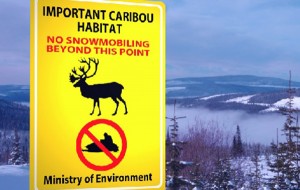 For the South Selkirk herd, a significant portion of core caribou habitat has been closed to snowmobile use and almost all core caribou habitat has been protected from logging and road building. In July 2008, the Nature Conservancy of Canada purchased 550 square kilometres of land in the region specifically for conservation purposes.
For the South Selkirk herd, a significant portion of core caribou habitat has been closed to snowmobile use and almost all core caribou habitat has been protected from logging and road building. In July 2008, the Nature Conservancy of Canada purchased 550 square kilometres of land in the region specifically for conservation purposes.
To learn more about mountain caribou and recovery actions, visit: http://www.env.gov.bc.ca/wld/speciesconservation/mc/
Wolf Management Plan
On April 17, 2014, the Provincial Grey Wolf Management Plan was finalized and publicly released.
The wolf management plan fully recognizes that the fundamental goal of wolf management in British Columbia, as with all other provincial game species, is to maintain self-sustaining populations throughout the species’ range.
Government supports a ‘two-zone management strategy’ approach for wolves in B.C.:
 – In most areas, wolf management will be concerned with ensuring that wolves continue with their ecological role as a top predator. This is accomplished through sustainable hunting and trapping opportunities with controls on harvest through specified season lengths and bag limits.
– In most areas, wolf management will be concerned with ensuring that wolves continue with their ecological role as a top predator. This is accomplished through sustainable hunting and trapping opportunities with controls on harvest through specified season lengths and bag limits.
– In areas of livestock depredation or species at risk threatened by wolf predation are a concern, the plan commits government to responsibly helping stakeholders, ranchers and First Nations manage the impacts of expanding wolf populations. In these areas, detailed implementation plans would be developed before any actions are undertaken.
– The Wolf Management Plan allows for measures such as targeted aerial wolf removal in support of caribou protection for circumstances exactly like those occurring in the South Peace and South Selkirk herds.
* There are no plans to implement a general aerial wolf cull, and in fact, the Two Zone Strategy noted in the Wolf Management Plan would not support a general cull.
* Wolf populations are plentiful and the grey wolf is not a species of concern in British Columbia.
* The wolf population for British Columbia is estimated to range between 5,300 and 11,600 with a median population of 8,500.
* The risk of removing the number of wolves recommended is very low, whereas the risk to pertinent caribou populations of doing nothing is very high.
To view a copy of the wolf management plan, visit: http://www.env.gov.bc.ca/fw/wildlife/management-issues/docs/grey_wolf_management_plan.pdf
Lead photo: B.C. Government image
Wolf image by Wilderness Images by Steve Gettle
e-KNOW



